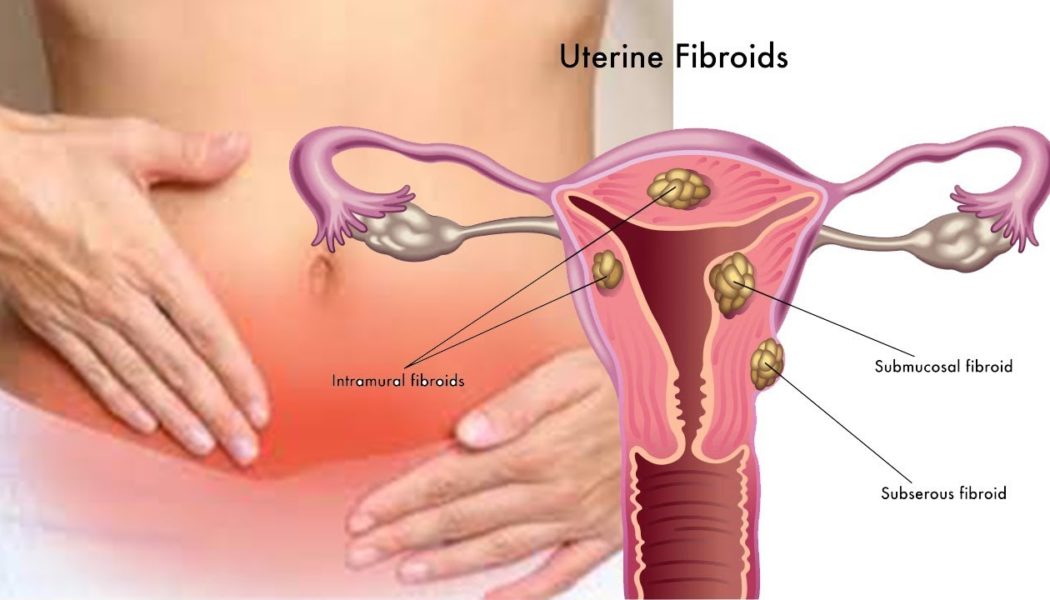Myomectomy in Marbella
Search and Compare the Best Clinics and Doctors at the Lowest Prices for Myomectomy in Marbella

Find the best clinics for Myomectomy in Marbella
No pricing info available
Mexico offers the best prices Worldwide
Price: $ 260
Hospital Ceram, can be found in Calle del Mediterraneo, Marbella, Spain and offers its patients Myomectomy procedures as well as 71 other procedures, across 15 different procedure categories. At present, there is no pricing information for Myomectomy procedures at Hospital Ceram. The pricing information is quite specialised, so it's only available on request. Many medical professionals work at the Hospital, with 15 in total, and Hospital Ceram has several accreditations, including: SELMQ - Sociedad Española de Láser Médico QuirúrgicoSEME - Sociedad Española de Medicina EstéticaSEMCC - Sociedad Española de Medicina y Cirugía CosméticaSECPRE - Sociedad Española de Cirugía Plástica, Reparadora y EstéticaSEF - Sociedad Española De FertilidadSEP - Excellence in Private HealthASRM - American Society for Reproductive MedicineAECEP - Asociación Española de Cirugía Estética Plástica
WHY US?
At Medijump, we're making medical easy. You can search, compare, discuss, and book your medical all in one place. We open the door to the best medical providers worldwide, saving you time and energy along the way, and it's all for FREE, no hidden fees, and no price markups guaranteed. So what are you waiting for?

Free

Best Price

Widest Selection

Risk-Free
What you need to know about Myomectomy in Marbella

Myomectomy is a surgical procedure performed to remove Uterine fibroids – abnormal growths that appear in or on a woman’s uterus. You may undergo this procedure if you have any of the following symptoms: Heavy menstrual bleeding, Menstrual periods that last longer than a week, pelvic pressure or pain, frequent urination, etc.
What does a Myomectomy Procedure Involve?
There are three types of myomectomy: abdominal myomectomy, laparoscopic myomectomy, and hysteroscopic myomectomy. All performed under general anesthetic. With abdominal myomectomy, your surgeon makes a large incision through the lower abdomen into the uterus, removes the fibroids from the uterine wall, and closes the incisions with stitches. With laparoscopic myomectomy, your surgeon makes four small incisions to insert surgical tools and a laparoscope (a thin, flexible tube with a light and a camera on one end) and cut your fibroids into small pieces. With hysteroscopic myomectomy, your surgeon inserts a thin scope through your vagina and cervix into your uterus, then shave off pieces of the fibroid using a wire loop.
How Long Should I Stay in Marbella for a Myomectomy Procedure?
Unless you undergo hysteroscopic myomectomy, you will need to stay in the hospital for 1 to 3 days. Plan to stay in Marbella for at least 7 days to attend follow-up checkups and also removal of the stitches.
What's the Recovery Time Like?
You will need to rest for 1 week and the recovery period depends on which type of Myomectomy you underwent: four to six weeks after abdominal myomectomy, two to four weeks after laparoscopic myomectomy, two to three days after hysteroscopic myomectomy. Wait for around six weeks until you can have sex, but you should wait three to six months before trying to get pregnant.
What sort of Aftercare is Required for Myomectomy Procedures in Marbella?
After the surgery, you will have some restrictions on your diet. You will need to take care of the surgical site as it heals to limit scarring and infection. You may be advised to do some light exercises, but refrain from doing anything strenuous such as heavy lifting until you are fully recovered.
What's the Success Rate of Myomectomy Procedures in Marbella?
Myomectomy is very effective and complications are very rare. However, it does have some risks and side effects you need to be aware of, including excessive blood loss, pregnancy complications, scar tissue, damage to nearby organs, and new fibroids.
Are there Alternatives to Myomectomy Procedures in Marbella?
If your fibroids do not cause any symptoms or the symptoms are mild, you do not need any treatment. If you do need treatment, your alternatives to myomectomy are myolysis, uterine artery embolization, hysterectomy, and endometrial ablation.
What Should You Expect Before and After the Procedure
After a myomectomy, you will have relief from the symptoms of your uterine fibroids, such as pelvic pain and menstrual bleeding.
Whilst the information presented here has been accurately sourced and verified by a medical professional for its accuracy, it is still advised to consult with your doctor before pursuing a medical treatment at one of the listed medical providers
No Time?
Tell us what you're looking for and we'll reachout to the top clinics all at once
Enquire Now

Popular Procedures in Marbella
Price on Request

Prices Start From $714

Prices Start From $714

Recommended Medical Centers in Marbella for Myomectomy

- Interpreter services
- Translation service
- Religious facilities
- Medical records transfer
- Medical travel insurance
- Health insurance coordination
- TV in the room
- Safe in the room
- Phone in the room
- Private rooms for patients available

- Interpreter services
- Translation service
- Religious facilities
- Medical records transfer
- Medical travel insurance
- Health insurance coordination
- TV in the room
- Safe in the room
- Phone in the room
- Private rooms for patients available

- Interpreter services
- Translation service
- Religious facilities
- Medical records transfer
- Medical travel insurance
- Health insurance coordination
- TV in the room
- Safe in the room
- Phone in the room
- Private rooms for patients available
Myomectomy in and around Marbella
About Marbella
Marbella is a city and a municipality located in southern Spain. Situated on the Mediterranean Sea, the city is one of the most cosmopolitan beach resorts in the country. It is particularly famous for its beaches with fine sand and clear blue water. Today, Marbella has become a preferred destination for medical tourism. The city is filled with a great variety of hospitals and clinics offering high-class services, from beauty and wellbeing to major medical treatments such as oncology and traumatology. All the private hospitals in the city now have a department that works exclusively to attract international patients. These hospitals all provide luxurious services and round the clock care. International medical tourists will feel as if they are staying in a 5-star hotel instead of a hospital. Furthermore, these hospitals are staffed with highly-skilled doctors and specialists.
Popular Parts of Madrid
Marbella’s biggest draw is its beaches, including Nagüeles Beach and El Ancón Beach, where people can sunbathe, swim, or even enjoy water sports activities. Most of the beaches are also lined with amazing beach bars to eat or drink while escaping the heat. Beyond its beaches, Marbella also has a significant historical heritage. The most popular area to visit is the old quarter (Casco Antiguo), which is packed with beautiful Andalucian and Moorish architecture, ornately painted tiles, balconies full of flowers, and narrow streets. Visitors can also find numerous churches and chapels. In the heart of the old quarter is Plaza de Los Naranjos, a square where visitors can find the city hall, restaurants and bars, renaissance architecture, and orange trees.
Transport in Madrid
Málaga Airport is the nearest airport to Marbella. It has both domestic and international flights to many cities in Europe and is serviced by numerous airlines. Those who want to get around with public transportation are provided with a network of seven local bus lines, which is relatively affordable and will get visitors too many places around the city. Taxis are available and official rates are displayed inside the licensed taxi. Visitors who stay in the downtown area can get around by foot easily since the area is fairly compact.
Visas in Madrid
Spain is a part of the Schengen Convention, meaning citizens of 62 countries, such as Australia, Canada, and the US, do not need a visa to visit and stay in Marbella for up to 90 days. Holders of passports issued by other countries not listed in the visa-free agreement need to apply and obtain a visa prior to arrival.
Weather in Madrid
Marbella experiences a Mediterranean climate with about 320 sunshine days each year. The summer in the city is hot, while the winter is typically mild. During the hottest months, July and August, the temperatures can soar to 30°C, but the breeze of the Mediterranean Sea will make the hot temperatures bearable. December to January is somewhat rainier than the rest of the year.
Additional Info
- Local Currency: The local currency used in Marbella is the Euro. 1 EUR converts to approx. 1.12 USD.
- Money & Payments: ATMs are widely available around Marbella. Credit cards are accepted in most businesses and tipping is expected in some places.
- Local Language: The Spanish spoken in Marbella is Andalusian Spanish. English is widely spoken, especially in tourist areas.
- Local Culture and Religion: Christianity is the largest religion in Marbella. However, other religions are also freely practiced.
- Public Holidays: New Year's Day, Andalucía Day, San José, Spanish National Day, and Christmas Day are some of the most important public holidays in the city.
Popular Searches
- Plastic Surgery in Thailand
- Dental Implants in Thailand
- Hair Transplant in Thailand
- Breast Augmentation Thailand
- Gastric Sleeve in Thailand
- Gender Reassignment Surgery in Thailand
- Laser Hair Removal in Bangkok
- Botox in Bangkok
- Dermatology in Bangkok
- Breast Augmentation in Bangkok
- Coolsculpting in Bangkok
- Veneers in Turkey
- Hair Transplant in Turkey
- Rhinoplasty in Turkey
- Stem Cell Therapy in Mexico
- Rhinoplasty in Mexico
- Liposuction in Mexico
- Coolsculpting in Tijuana
- Rhinoplasty in Korea
- Scar Removal in Korea
- Gastric Sleeve in Turkey
- Bone Marrow Transplant in India
- Invisalign in Malaysia
- Plastic Surgery in the Dominican Republic
- Tummy Tuck in the Dominican Republic
- Plastic and Cosmetic Surgery in Poland
- Rhinoplasty in Poland
- Hair Implant in Poland
- Dental Implants in Poland
- IVF in Turkey
